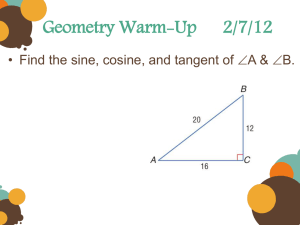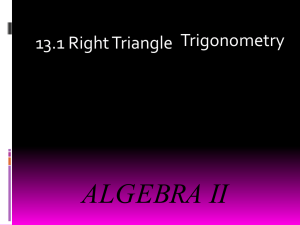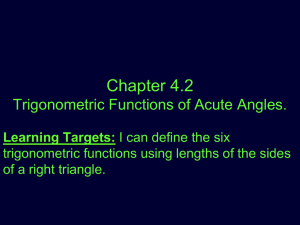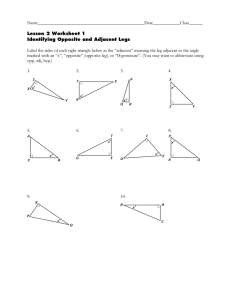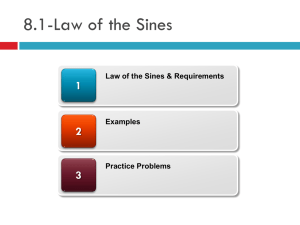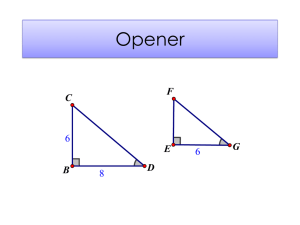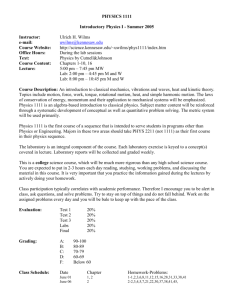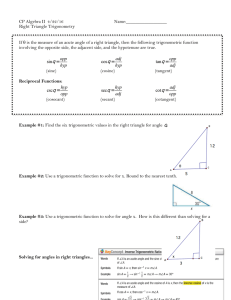Net Force - Mr. Clintberg`s Studyphysics!
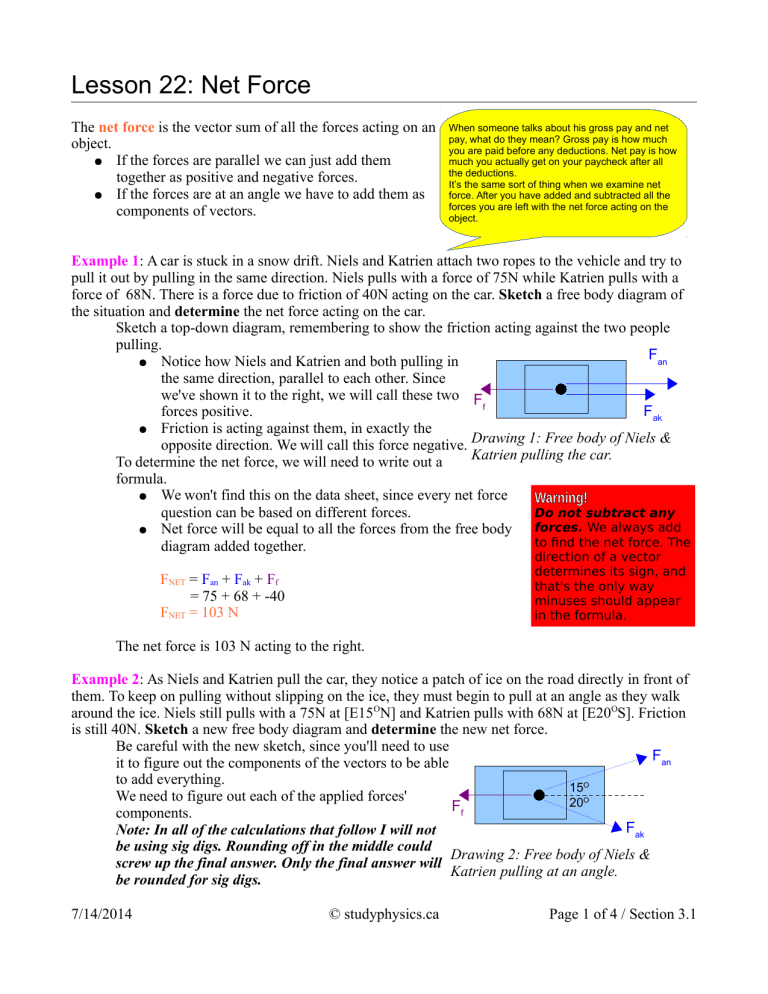
Lesson 22: Net Force
The net force is the vector sum of all the forces acting on an object.
●
If the forces are parallel we can just add them together as positive and negative forces.
●
If the forces are at an angle we have to add them as components of vectors.
When someone talks about his gross pay and net pay, what do they mean? Gross pay is how much you are paid before any deductions. Net pay is how much you actually get on your paycheck after all the deductions.
It’s the same sort of thing when we examine net force. After you have added and subtracted all the forces you are left with the net force acting on the object.
Example 1 : A car is stuck in a snow drift. Niels and Katrien attach two ropes to the vehicle and try to pull it out by pulling in the same direction. Niels pulls with a force of 75N while Katrien pulls with a force of 68N. There is a force due to friction of 40N acting on the car. Sketch a free body diagram of the situation and determine the net force acting on the car.
Sketch a top-down diagram, remembering to show the friction acting against the two people pulling.
●
Notice how Niels and Katrien and both pulling in the same direction, parallel to each other. Since
F an
●
To determine the net force, we will need to write out a formula.
●
We won't find this on the data sheet, since every net force
● we've shown it to the right, we will call these two forces positive.
Friction is acting against them, in exactly the opposite direction. We will call this force negative.
question can be based on different forces.
F f F ak
Drawing 1: Free body of Niels &
Katrien pulling the car.
Net force will be equal to all the forces from the free body diagram added together.
Warning!
Do not subtract any forces. We always add to find the net force. The direction of a vector
F
F
NET
NET
= F an
+ F
= 103 N ak
+ F f
= 75 + 68 + -40 determines its sign, and that's the only way minuses should appear in the formula.
The net force is 103 N acting to the right.
Example 2 : As Niels and Katrien pull the car, they notice a patch of ice on the road directly in front of them. To keep on pulling without slipping on the ice, they must begin to pull at an angle as they walk around the ice. Niels still pulls with a 75N at [E15 O N] and Katrien pulls with 68N at [E20 is still 40N. Sketch a new free body diagram and determine the new net force.
Be careful with the new sketch, since you'll need to use it to figure out the components of the vectors to be able to add everything.
We need to figure out each of the applied forces' components.
Note: In all of the calculations that follow I will not be using sig digs. Rounding off in the middle could screw up the final answer. Only the final answer will be rounded for sig digs.
F f
15 O
20 O
O S]. Friction
F ak
Drawing 2: Free body of Niels &
Katrien pulling at an angle.
F an
7/14/2014 © studyphysics.ca
Page 1 of 4 / Section 3.1
Niels' Components
75N
15 O x
Drawing 3: Niels' vector broken into components.
y cos = adj hyp adj = cos hyp adj = cos 15 x = adj =
O
75
72.444N
y opp = sin hyp opp = sin15 O
= sin opp
=
= opp hyp
75
19.411
N
Katrien's Components x
20 O
68N y cos = adj hyp adj = cos hyp adj = cos20 O
68 x = adj = 63.899N
sin = opp hyp opp = sin hyp opp = sin20 O
68 Drawing 4:
Katrien's vector broken into components.
y = opp = 23.257N
Now we figure out what all of our x-components added together give us It's sort of like doing a special “x-component only” net force. Don't forget that friction is a x-component. x-components
F
F x x
= F an
+ F ak
+ F
= 96.343 N f
= 72.444 + 63.899 + -40
Now figure out the total of the y-components. Be careful that you show Katrien's y-component as negative, since it is pointing down. Friction does not have a y-component since it was totally pointing in the x direction.
y-components
F y
= F an
= 19.411 + -23.257
F y
+ F ak
= -3.846 N
Finally, add your x and y-components as a vector diagram to get the resultant.
96.343N
3.846 N
Resultant
Drawing 5: Resultant based on components.
c 2 c = c 2
= a
= 96.343
2
96.420
2
b
N
2
3.846
= 96 N
2 tan = tan = opp adj
3.846
96.343
= 2.3
O
The net force is 96N [E2.3
O S].
7/14/2014 © studyphysics.ca
Page 2 of 4 / Section 3.1
Example 3 : A 20kg sign is supposed to hang from a pair of wires attached to the wall and a support beam as shown in the diagram.
The wires that will be used can withstand a force of tension up to
300N each. Determine the tension in wire one (F
T1
) and wire two
(F
T2
), and explain any concerns you may have.
●
Start off by drawing a free body diagram of the situation.
●
Be sure to include the force due to gravity.
In the diagram I've moved the 40 O angle into a different spot, but this is ok. Since I am still measuring the angle from a straight horizontal line in both cases, they are congruent angles.
F
T1
F
T2
40 O
F
T1
Mr.C's Awesome
Physics Shop
Drawing 6: Sign hanging from two support cables.
40 O
F
T2
F g
Drawing 7: Free body diagram of hanging sign.
●
The important thing is that for the sign to hang without moving or falling, the net force acting on it must be zero. When several forces acting on each other cancel each other out, resulting in zero net force, we say that the forces are in a state of equilibrium .
●
F
T1
is pulling the sign up and to the right, while F
T2
is pulling it to the left, and F g
is pulling it down.
●
●
F
F
T1
will have to be broken into components (F magnitude to F vertically will be zero.
T1x
& F
T1y
).
T1y
is the only force holding the sign up, so it must be equal in g
pulling it down. That way the net force acting
F
T1
40 O
F
T1x
F
T1y
F g
F
= 20.0
− 9.81
g
F g
= mg
=− 196.2
N
0
F
F
NET
=−
T1y
= F g
196.2
F
T1y
F
T1y
= 196.2
N
Drawing 8: F
T1 broken into components.
●
We can use this value of F
F
T1
T1y to calculate F
T1
based on the triangle shown in Drawing 8.
sin = opp hyp hyp = opp sin
=
196.2
sin40 hyp = 305.23
N
7/14/2014
●
We can also see from the free body diagram that the force of tension in the second wire is exactly opposite to the x-component of the tension in the first wire. The net force is also zero horizontally. If we calculate F opposite to F
T2
.
T1x
(look back at drawing 8), it must be equal but
© studyphysics.ca
Page 3 of 4 / Section 3.1
tan
F
T1x
= opp adj adj = opp tan
=
196.2
tan40 adj = 233.82
N
F
NET
= F
0 = F
F
T2
T2
T2
+ F
T1x
= -233.82 N
+ 233.82 N
●
So the final values for the tensions in the two wires are 3.1e2 N [up] in wire one, and 2.3e2 N
[left] in wire two. Since the tension in wire one is greater than the 300 N the wire can withstand, it will have to be replaced with a stronger wire.
Homework
p.132 #1 p.133 #2 p.135 #2 p.136 #3, 7
7/14/2014 © studyphysics.ca
Page 4 of 4 / Section 3.1
